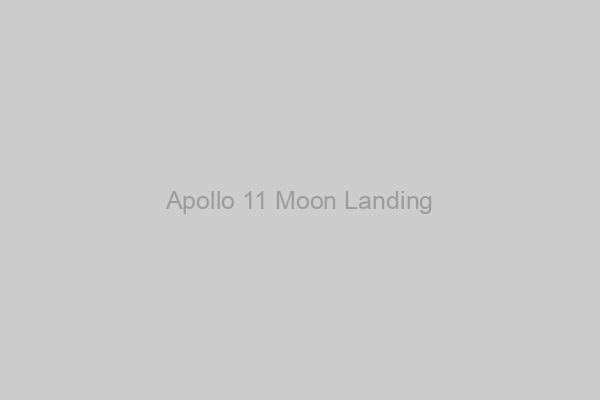we choose to go to the moon
The Apollo 11 Moon Landing: A Giant Leap for Mankind
Introduction
On July 20, 1969, humanity achieved one of its greatest feats: landing humans on the Moon. This historic event was part of the Apollo 11 mission, led by NASA.
Key Figures
- Neil Armstrong
- Buzz Aldrin
- Michael Collins
The Journey
The Saturn V rocket launched from Kennedy Space Center on July 16, 1969. After traveling 384,400 km, the Eagle lunar module landed on the Moon’s surface.
That’s one small step for man, one giant leap for mankind.
-- Neil Armstrong
Timeline
| Date | Event |
|---|---|
| July 16 | Launch from Kennedy Space Center |
| July 20 | Lunar landing |
| July 21 | First steps on the Moon |
| July 24 | Splashdown in the Pacific Ocean |
Scientific Achievements
The Apollo 11 mission brought back:
- Lunar rock samples
- Data on lunar radiation
- Insights into the Moon’s geology
Experiments Conducted
- Seismic experiment
- Laser ranging retroreflector
- Solar wind composition experiment
- Long-term lunar base establishment (future mission)
Impact and Legacy
The Moon landing had a profound impact on:
- Scientific research
- Technological advancements
- International cooperation
It also inspired future space exploration, including:
- Space Shuttle program
- International Space Station
- Mars exploration missions
For more information, visit NASA’s Apollo 11 page.

Code Sample: Calculating Lunar Distance
earth_radius = 6371
moon_radius = 1737
center_to_center = 384400
lunar_distance = calculate_lunar_distance(earth_radius, moon_radius, center_to_center)
print(f“The distance from Earth’s surface to the Moon’s surface is approximately {lunar_distance} km.”)
</div>This Markdown sample covers various features including headings, lists, tables, blockquotes, code blocks, links, and more!
---
Originally posted on [Bearblog](https://ehqo.bearblog.dev/we-choose-to-go-to-the-moon/)
Cross-posted via [EchoFeed](https://echofeed.app)